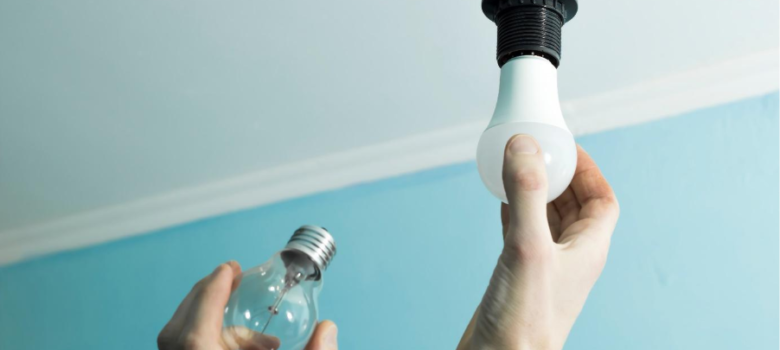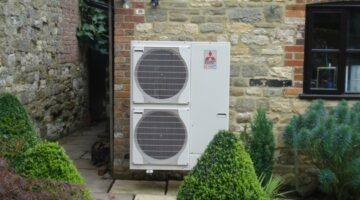
So far this year has had a big focus on our environmental consciousness and the damage we are doing to the planet due to our habits. The latest UN report revealed that human life is putting in danger over 1 million species, global warming is starting to hit a closer and closer to home, and the single-use plastic is damaging the oceans at a rapid rate.
The Extinction Rebellion in London caused a lot of fuss, but it finally brought some of the great environmental issues into focus. If we want to save the planet, we would all need to start making some changes in our lifestyles at a personal level, starting even from the smallest things – such as eco-friendly light bulbs.
Why Switch to Eco-Friendly Light Bulbs?
Incandescent lights, to start with, are not durable. They can easily break, and you probably know yourself that you need to always have a few spare ones around the house just in case the light bulb breaks in the middle of the night when you flick the switch to go to the toilet. They also consume a vast amount of energy, and they cost a lot in the long run.
Eco-friendly LED light bulbs are good for the environment simply because they use much less energy to run. The increased efficiency ranges between 25% and 80% in comparison to incandescent lights. On average, it is estimated that switching to eco-friendly light bulbs can save you up to £70 a year. It might not seem like a lot, but imagine how much less energy would be consumed if every household switched to eco-friendly light bulbs.
Types of Eco-Friendly Light Bulbs
There are three main types of eco-friendly light bulbs available on the market: halogen incandescent, LED and CFL.
Halogen incandescent lights consume less power, yet they are still not as energy efficient as LED and CFL. To put it into perspective, to produce the same amount of brightness as a 60W incandescent light bulb, you would need 42W for halogen incandescent light bulbs, 15W for CFL and 12W for LED.
When it comes to the lifespan, halogen incandescent lights have similar durability as the traditional incandescent lights. CFL can live up to 10 years while LED can go up to even 25 years of use.
What Type to Use?
If energy consumption and lifespan don’t bother you too much, you would need to think about the brightness in order to decide which one is the best for you. Previously, the intensity of a light bulb was measured in watts, which is actually the energy consumption. Logically, the more energy the light bulb consumed the more brightness it is going to give out. But as shown previously, watts are no longer the right way to measure intensity, which is why we now measure brightness in lumens.
Each type of eco-friendly light bulbs come with different lumens count. For home use, you need around 500 lumens while for large dark spaces you need 1000 lumens. Generally, all three types can provide you with the same level of light. There is only one difference here – while halogen incandescent and LED lights reach their maximum brightness immediately when you flick the switch, CFL takes a minute or two.
In terms of price, the most expensive of the three are the LED light bulbs. Still, when you consider their long lifespan, it does seem like a good investment. The energy you will be saving will basically pay for the LED light bulbs in the first year, and then you don’t have to worry about replacing them in the next 25 years. To score an additional discount, you can use these energy bulbs discount codes.
These energy efficient lights are not just environmentally friendly, but can be delightful to use in your home. You can find them in different shapes and hues from warm white tones to cold blue tones. And if you want to get a little bit wild with your lights, you can get smart LED lights, and control the colour through your phone.
Replacing all of the light bulbs in your home might seem like a big project, but you don’t have to do it all at once. When one of your existing light bulbs goes, replace it with an energy efficient light bulb. If you do that, gradually you will end up replacing all of them. Eco-friendly light bulbs are much more than only about saving electricity. It helps the environment as well, and as we keep seeing, now it is time to act to save our planet.
Think we missed something? Do you have a different opinion?
Comment below to get your voice heard…












As a person who suffers from SAD and CFS it would be really helpful to have some guidance towards health friendly / natural light qualities and not just energy consumption and cost. If we make ourselves ill by spending too many hours in blue light then our long term energy consumption (ie in and out of hospitals like myself) will increase hugely.
Reading this, one might easily assume that it’s simply a matter of selecting the most efficient eco-friendly bulb. (Buzzzz! No.) Compact fluorescents generally have unpleasant output spectra. LED bulbs have complex interactions with dimmers, if your home is fitted with dimmers, even if the bulbs say that they work with dimmer. I think a more realistic presentation would be a good plan.
Cool blue o bright light to read by is extremely important for me.
Where can I order from.
All shops I go to have ‘sold out’no idea when re stocking.
What is the best environmentally safe color ppfor outdoor lamp posts